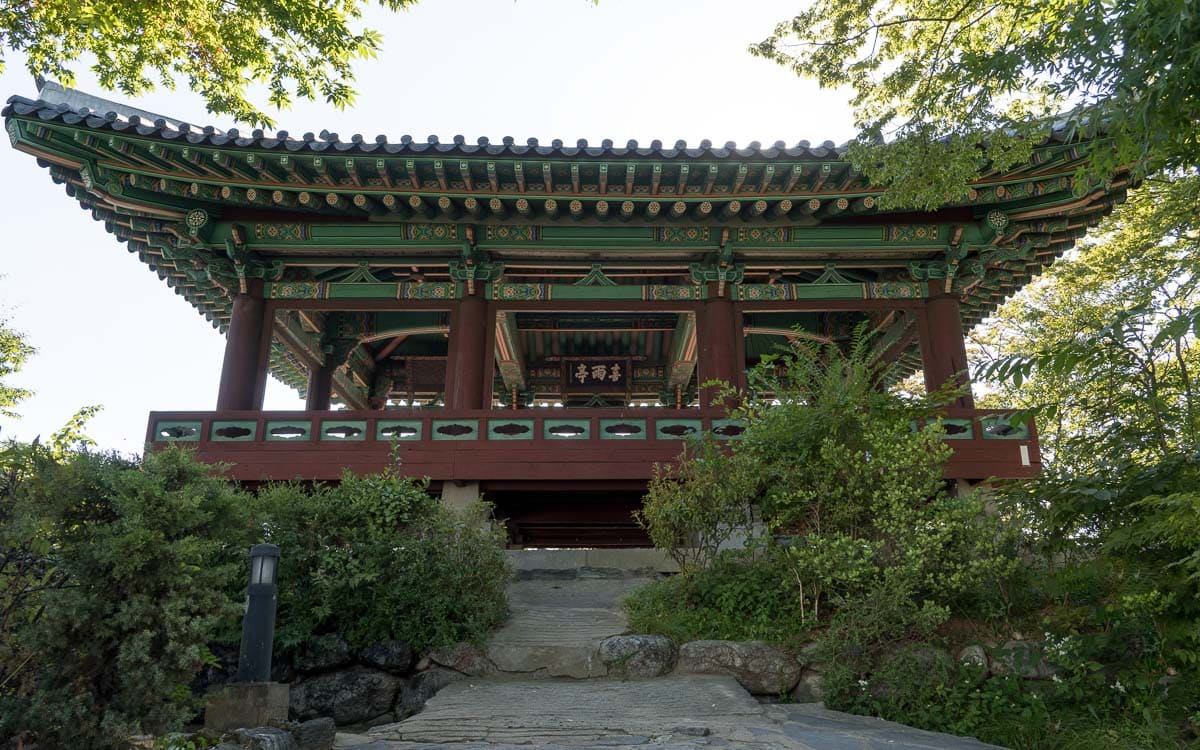
Mangwonjeong Pavilion is a historic pavilion in Seoul, originally built in 1424 during the Joseon Dynasty by Grand Prince Hyoryeong. The pavilion seen today dates back to 1989, as a flood destroyed the original in 1925.
Grand Prince Hyoryeong, King Sejong’s older brother, built a villa at the site in 1424. King Sejong, also known as Sejong the Great, was the fourth ruler of the Joseon Dynasty and reigned from 1418 to 1450.
The pavilion, built on a rocky cliff by the river, had a stone foundation, measured three bays wide and one bay deep, and featured railings and a hipped-and-gabled roof.
By the following year, Hyoryeong had completed the construction of a pavilion overlooking the Hangang River. He spent his time farming at the villa and enjoying river views from the pavilion. The pavilion hosted banquets for foreign envoys and was a popular destination for scholars.
King Sejong’s Visit and Naming of Heeujeong
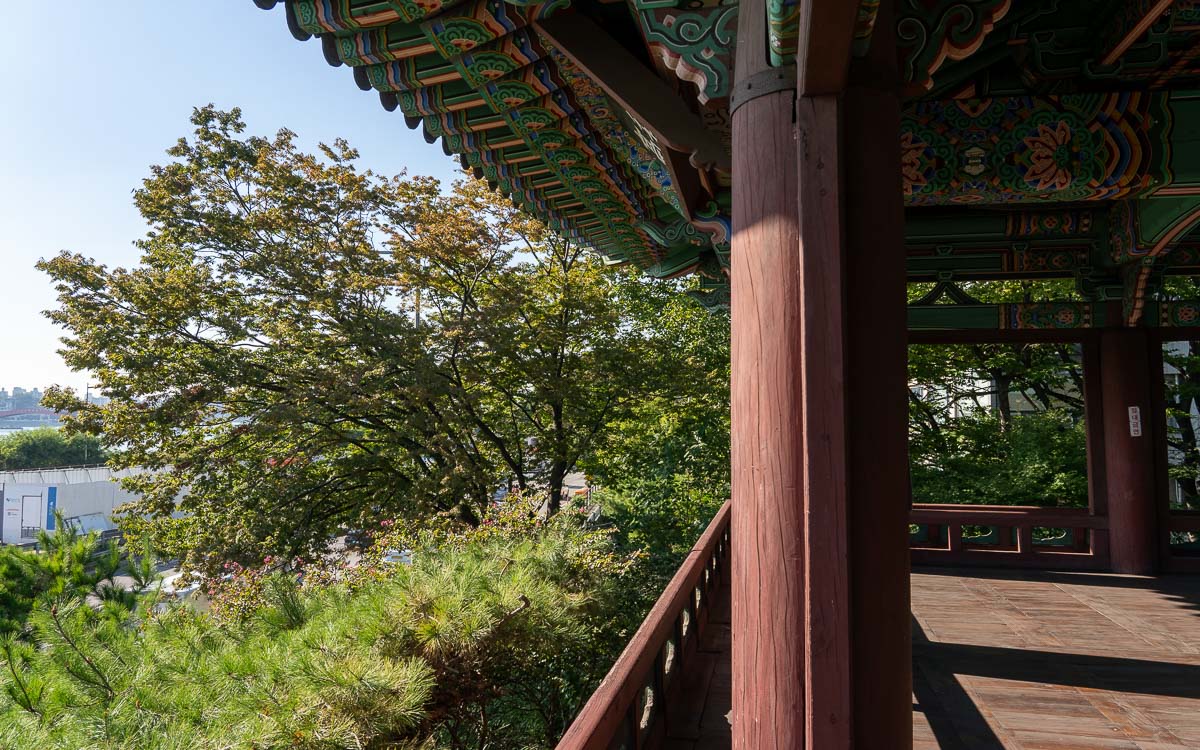
In 1425, according to Gunggwolji (Records of the Palaces), King Sejeong visited the villa to check on farmers after a long drought. He also visited the newly constructed pavilion.
During his visit, rain fell and soaked the fields. Delighted by the rain, Sejeong named the pavilion Heeujeong, meaning “Pavilion of Joyful Rain.”
Grateful for the king’s visit and naming of the pavilion, Hyoryeong asked renowned calligrapher Shin Jang to inscribe its name. Famed writer Byeon Gye-ryang also composed a commemorative inscription.
Sejong often returned to Heeujeong to write poetry, commission artwork, and check on farmers. He also inspected military drills in the area, as the Hangang River was a training ground for the Joseon Navy.
Reconstruction and Renaming as Mangwonjeong
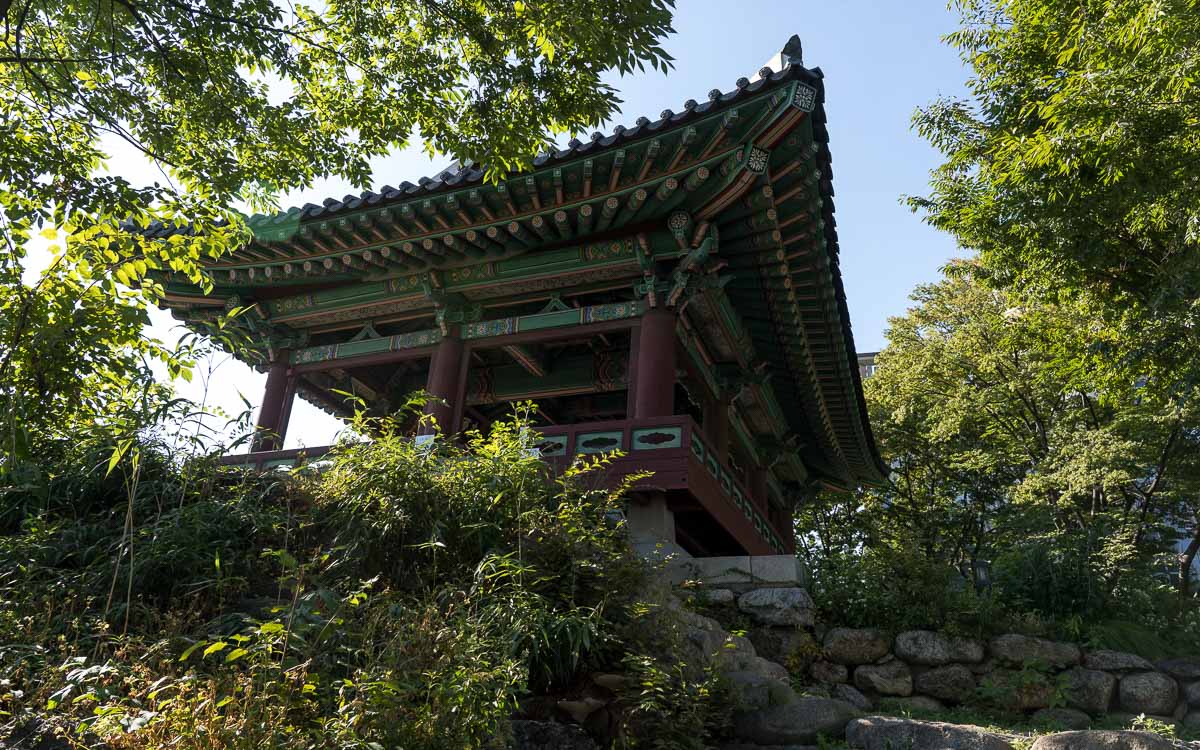
In 1484, Prince Wolsan, the older brother of King Seongjong, took over the aging pavilion from Grand Prince Hyoryeong and rebuilt it.
King Seongjong, the ninth Joseon king, gave it a new name, Mangwonjeong, meaning ‘Pavilion with a Distant View,’ for its beautiful views of the mountains and river.
Destruction and Modern Restoration
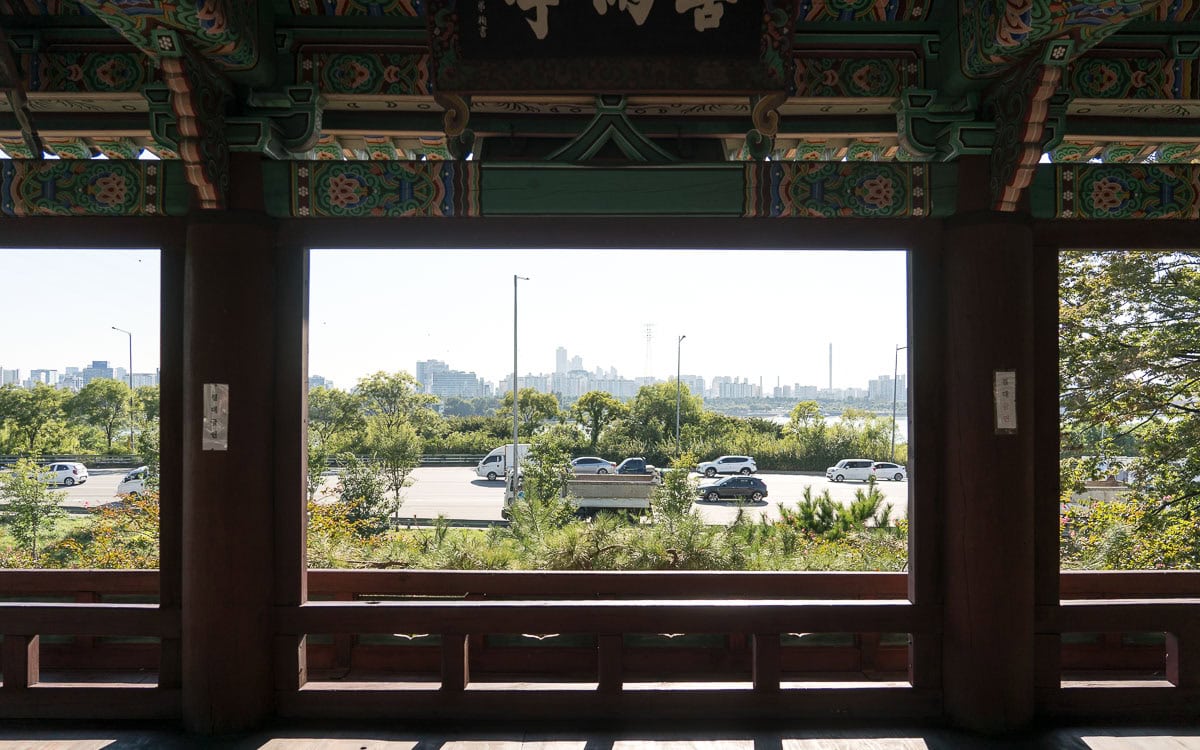
A flood destroyed Mangwonjeong in 1925. In 1987, the Seoul Metropolitan Government excavated the site. In July 1989, they began restoring the pavilion that overlooks the Hangang River and Gangbyeonbuk-ro.
The restoration, completed in 1992, followed historical records, using traditional Korean building techniques and materials to restore its original beauty and heritage.
The rebuilt pavilion stands on a slope, with larger stones at the front and smaller ones at the back. It has round pillars and a hipped-and-gabled roof. Colorful traditional paintwork called dancheong decorates the pavilion.
The structure is three bays wide, two bays deep, and built in a classic pavilion-style with layered eaves and wooden beams.
Architectural Features

The roof has decorations known as yangseong along the top with wooden supports built in two separate levels. The design includes flower-shaped wooden pieces above the main beam and Y-shaped columns that match early Joseon architecture.
A sign reading ‘望遠亭’ (Mangwonjeong) hangs under the front eaves facing Gangbyeonbuk-ro, while a plaque inside reads ‘喜雨亭’ (Heeujeong).
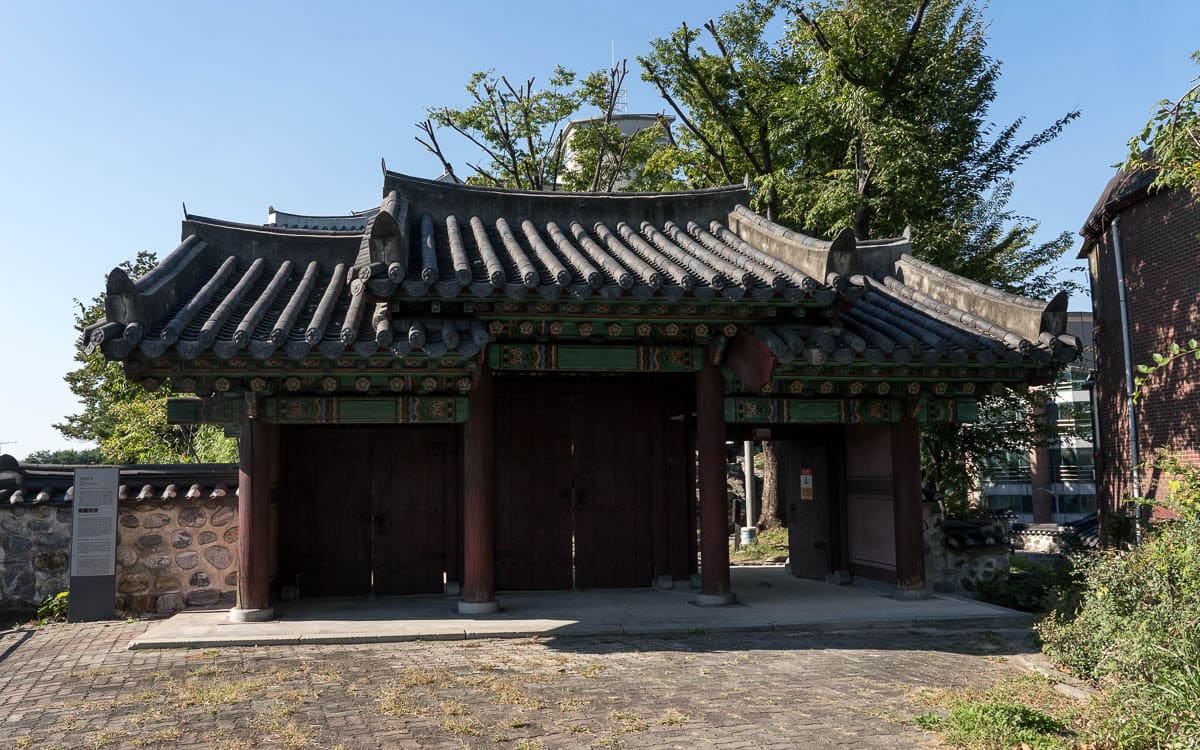
On the southeastern side of the pavilion is a raised three-gate entrance. There is also a separate entrance on the eastern side.
Cultural Heritage Status
In 1990, the government of Seoul designated Mangwonjeong Pavilion as a Seoul Monument.
Mangwonjeong Pavilion Information
Hours
Admission
Free
Address
457-1 Hapjeong-dong, Mapo-gu, Seoul, South Korea
GPS Coordinates: 37.54986, 126.90455
Map
Additional Resources
Klook
Klook offers discounted tickets and reservations for attractions and services in Seoul—from theme parks and museums to tours and transportation.
Viator by TripAdvisor
Book tours, activities, and unique experiences in Seoul—from sightseeing to cultural events and outdoor adventures—offered by local providers.
Rakuten
Save with cashback on hotels and travel services. Sign up and you could earn $30 cashback on your first purchase over $30.
Book Recommendations
Prefer a physical guide? Fodor’s Seoul offers detailed recommendations, maps, and travel tips for the city.
Nearby Sights
Yanghwajin Foreign Missionary Cemetery
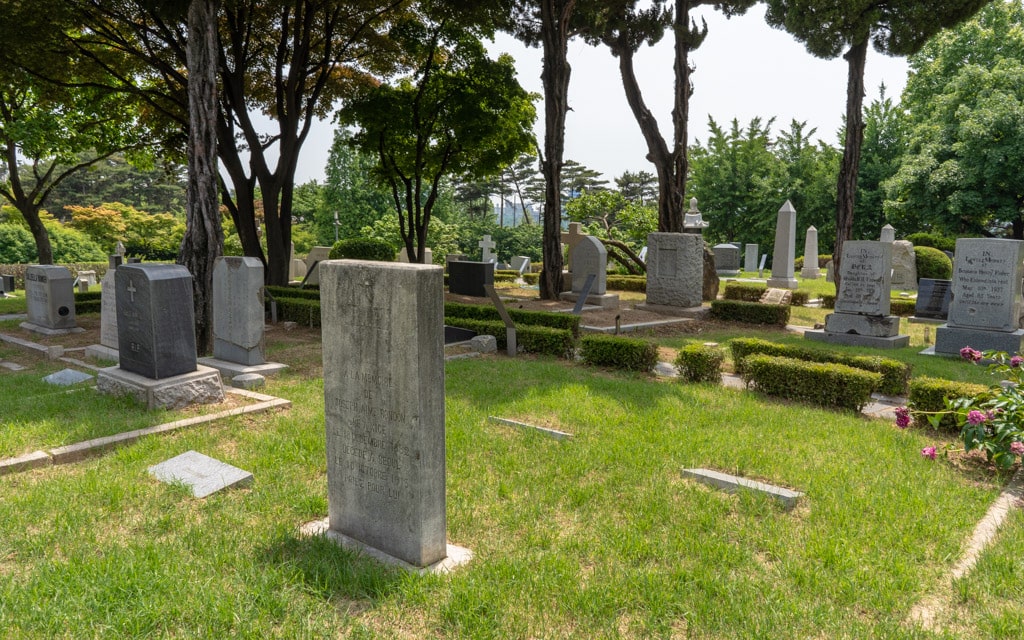
Yanghwajin Foreign Missionary Cemetery is an international cemetery designated by King Gojong that holds the tombs and graves of many foreign missionaries. The cemetery is also known as Hapjeong-dong International Cemetery. The need for a foreign cemetery in Seoul was…
Seonyudo Park
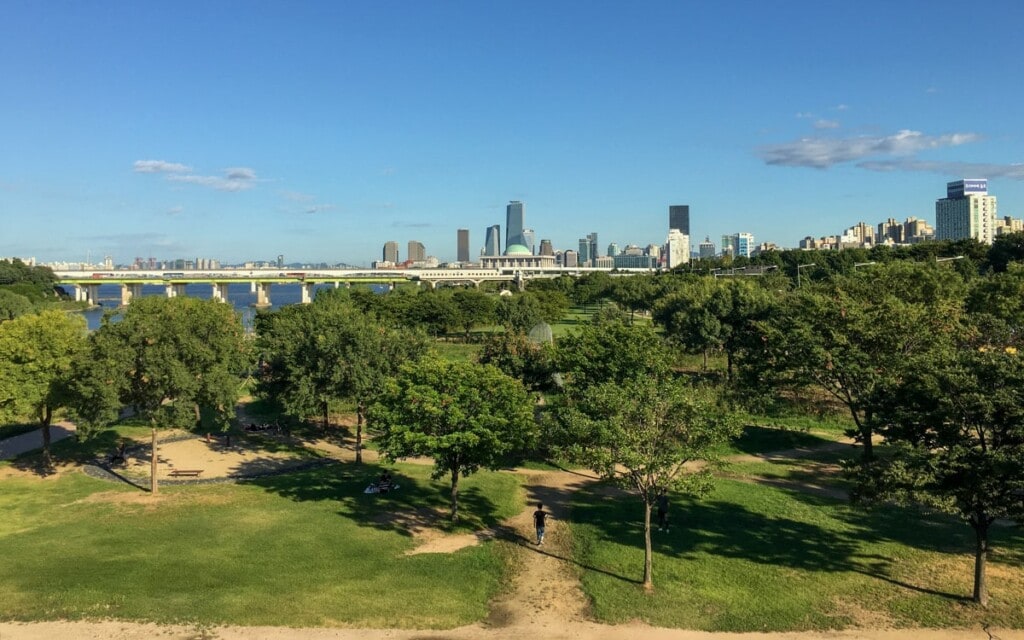
Seonyudo Park is a popular park and open space located on an island on the Hangang River that was formerly used as an industrial water treatment plant. The small island, located west of Yeouido, was opened in 2009 after city…
Jeoldusan Martyrs' Shrine
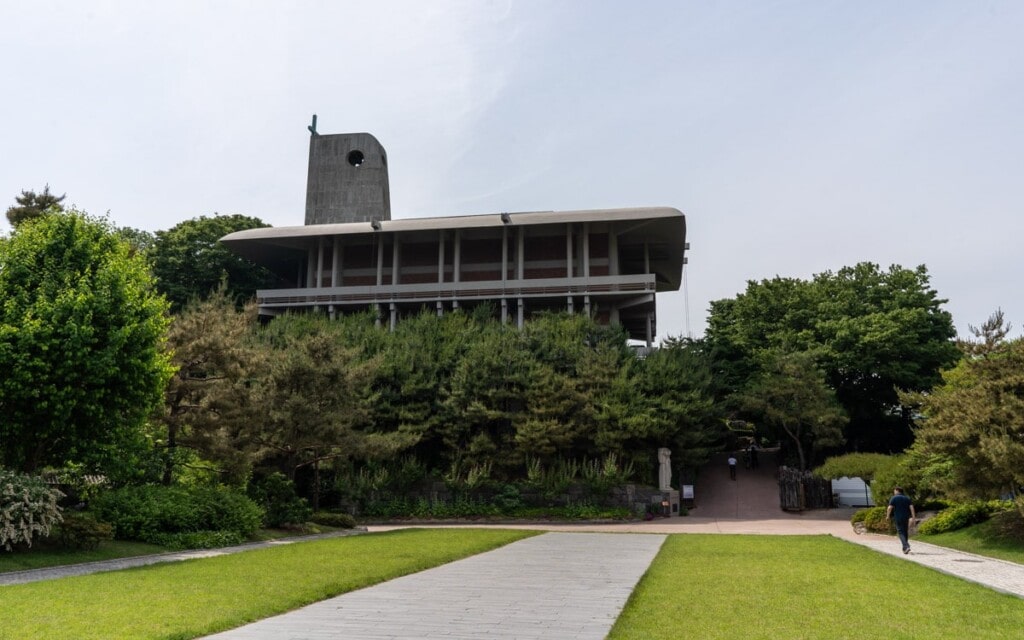
Jeoldusan Martyrs' Shrine is a Catholic shrine on the Hangang River dedicated to those who gave up their lives during the Byeongin persecutions of 1866. In late 1866, nine French missionaries were martyred. This caused two attempted invasions into Korea…
Seonyudo Bridge
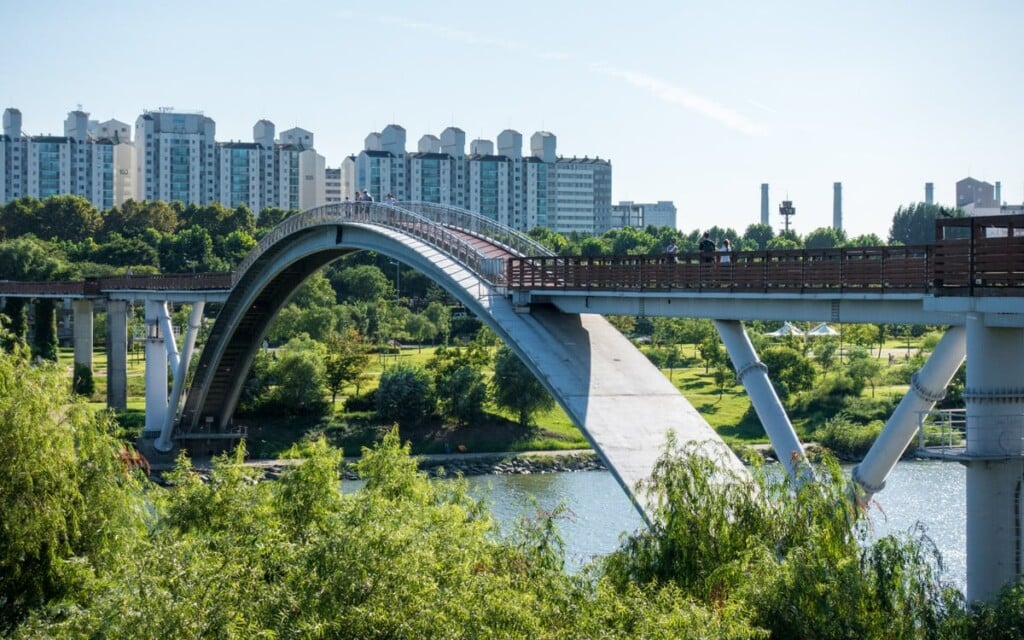
Seonyudo Bridge is a pedestrian only footbridge that connects Yanghwa-dong in the south to Seonyudo Park located on the Hangang River. The name means "spending time idly in the scenic heaven." It is also known as the footbridge of peace.…
Hongdae (Hongik University Area)
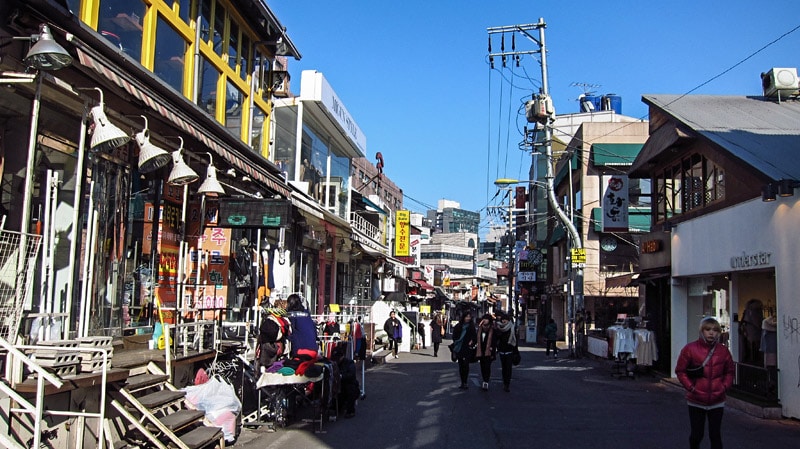
Hongdae is a vibrant, energetic, and youthful neighborhood and nightlife district popular for indie music, street art, galleries, cafes, and shops. The area is named after the nearby Hongik University (Hongik Daehakgyo), one of the most prestigious fine arts universities…
Hongdae Free Market
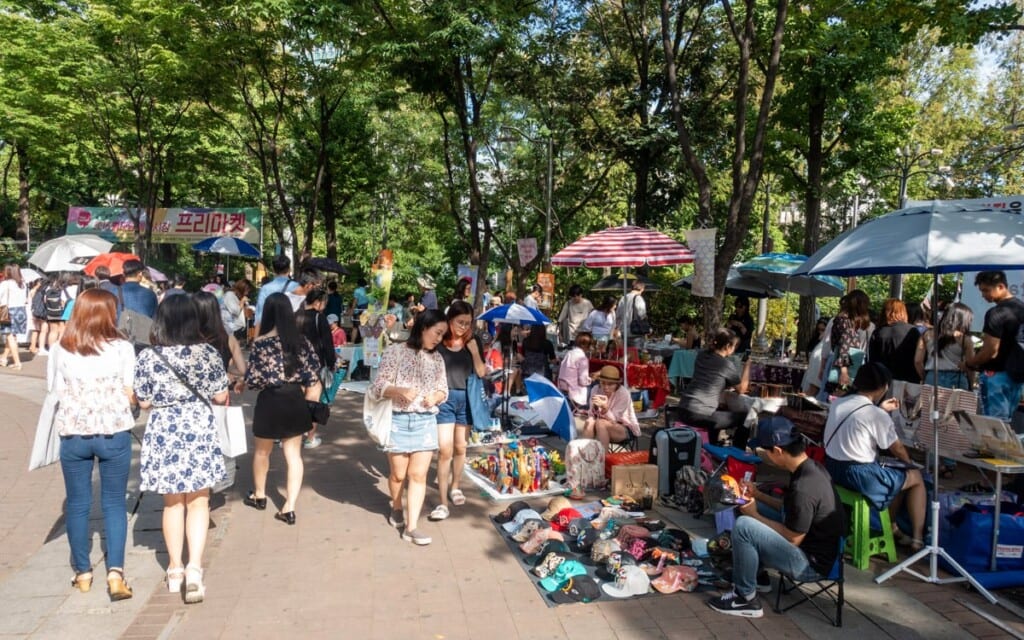
The Hongdae Free Market is a fun and unique arts and crafts market where artists, performers, musicians, and visitors can interact face to face. Artists from all over Korea, and even from other countries, meet here each Saturday from March…
Last Updated on Aug 4, 2025